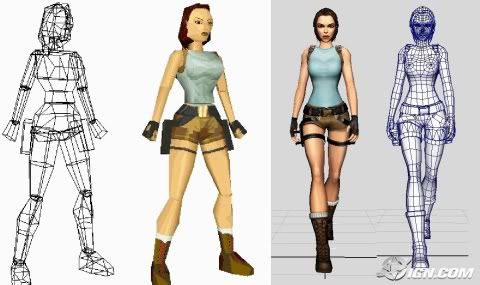To follow up the last post, here's a couple other demos I've found on Youtube that use the same method of creating real time water for use in the Blender Game Engine.
Saturday, October 22, 2011
Other Real Time Water Examples
Tuesday, October 18, 2011
Real Time Water Tutorial
Not sure if I've posted this one up yet, but the folks at YoFrankie! have posted an indepth tutorial on creating animated water in real time for use within the Blender Game Engine. The effect is achieved using Normal Maps mapped onto a flat plane. Photoshop or another graphic editor is required for this. The graphic part is fairly tedious, and somewhat time consuming. But once it's done, you have your own water maps to use over and over!
UPDATE: Finally recorded a video of my own after following the tutorial
Labels:
blender 2.49,
blender game engine,
normal maps,
tutorial,
water
Wednesday, July 27, 2011
Blender Game Engine Tutorial
A useful video on how to texture a level with the use of texture atlases. The video says "Part 1" but I don't think the author has gotten around to making a Part 2 yet.
Sunday, July 24, 2011
Sunday, July 17, 2011
ShermanCG, Swords

I stumbled upon this fantastic set of swords done by Isaiah Sherman. I really appreciate the progressive change in the designs. The textures are sweet, too. Looking forward to seeing more from this guy. Check out the link to his page, there are wireframes, textures and concept sketches for this set.
ShermanCG, Swords
Tutorial, Video Game Prop Modeling

I found a simple tutorial over at BlenderCookie. While the model itself isn't the most exciting, he goes over a lot of the fundamental thinking that is involved when modeling props for video games. It's important to remember that optimizing your model for the lowest amount of polygons, while still maintaining the basic shape of your model, should be the most important thing. The video is a bit lengthy but there's a lot of useful techniques, including keystrokes for the UV layout that I wasn't aware of.
Part 01
Part 02
Labels:
blender 2.5,
low poly,
modeling,
tutorial,
video games
Saturday, July 16, 2011
FF9, Bestiary
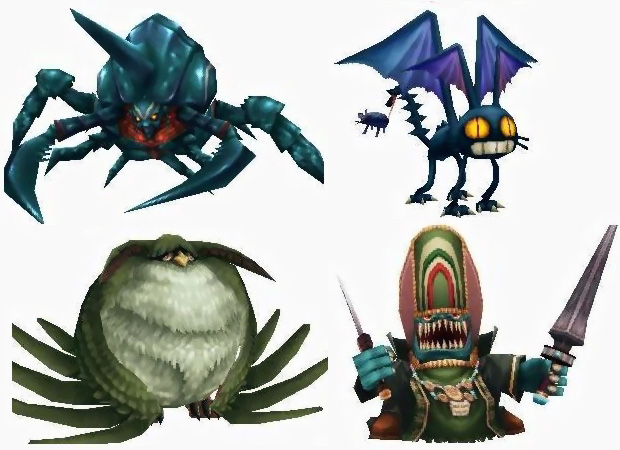
I've always admired Squaresoft's work in their video games, as well as the world created for Final Fantasy IX (for the most part). Here's a grid of the enemies you encounter throughout the game. The images aren't too big, and I wish there were some wireframes and texture examples out there somewhere, but this is a decent reference.
edit: I noticed the last link doesn't work anymore. Here's a new one: FF9 Bestiary
Thursday, March 24, 2011
Blender 2.5 Basics Crash Course
Wednesday, March 23, 2011
Tutorial: Rigging, Mechanical
I've started thinking about modeling robotic characters in the future, and how they can't be rigged exactly the same as organic characters. Organic characters need to be able to bend and change shape, but mechanical objects shouldn't (usually). These tutorials show how to rig a mechanical arm, and should suffice with rigging any mechanical character or object. This tutorial was done in Blender 2.5, but the theories should apply to 2.49.
One thing to remember, these tutorials assume each mechanical part is a separate object. If you designed a robotic character, most likely, you'll want all objects to be separate meshes in a single object, and you'd need to weight paint each bone to affect each part in the same way.
Key points:
PART 1
Creat Armature
E = Extrude Tool, extrude new bone from previously selected bone
Shift + S (while end of bone is selected)/Selection to Cursor = to move the endpoint to your previous selected vertices.
Clear Roll = once armature is finished to clear any unnecessary rotations for each bone (17:40)
Add Constraints to lock down certain rotations and location of each bone (24:50)
PART 2
Create IK Constraints
One thing to remember, these tutorials assume each mechanical part is a separate object. If you designed a robotic character, most likely, you'll want all objects to be separate meshes in a single object, and you'd need to weight paint each bone to affect each part in the same way.
Key points:
PART 1
Creat Armature
E = Extrude Tool, extrude new bone from previously selected bone
Shift + S (while end of bone is selected)/Selection to Cursor = to move the endpoint to your previous selected vertices.
Clear Roll = once armature is finished to clear any unnecessary rotations for each bone (17:40)
Add Constraints to lock down certain rotations and location of each bone (24:50)
PART 2
Create IK Constraints
Monday, March 21, 2011
Tutorial/Reference: Texturing Casey Jones
I thought it'd be handy if I documented some of the steps I take when texturing a character. Click on any picture to see a larger version. Keep in mind, there's many steps in between. I often have to try different highlights and reload it to the character to make sure it works. These are the major steps.
Step 1. Color blocking
Here's where I go through and put down solid colors. When you apply it to your character, it's going to look like CRAP. That's because there's no lighting or details.
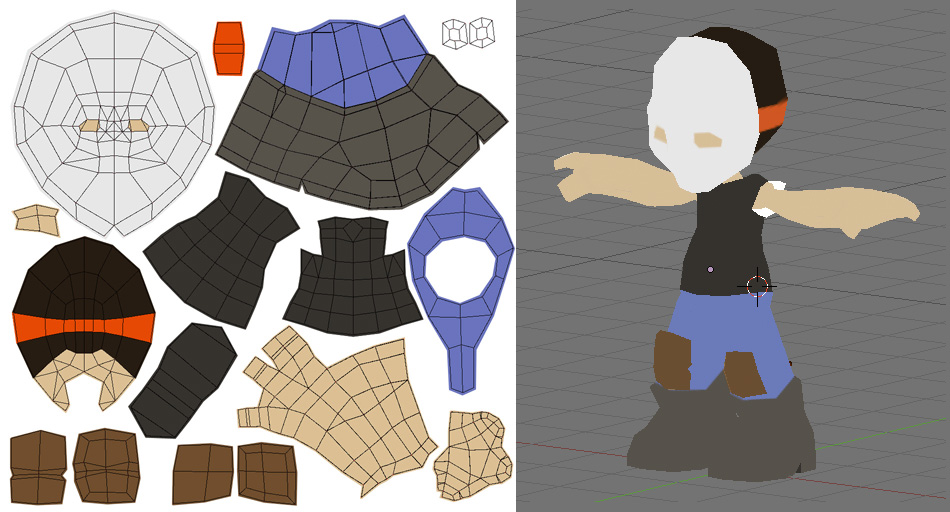
Step 2. Basic shadows and highlights
Some games utilize lighting, others don't. I like to paint in my lighting directly on the character. And I usually paint as if the light source is from above. I take liberties with that rule, though. If something needs a bit of highlight, I try to go for it. It's amazing how much better the character looks with some subtle gradients hinting at a light source.
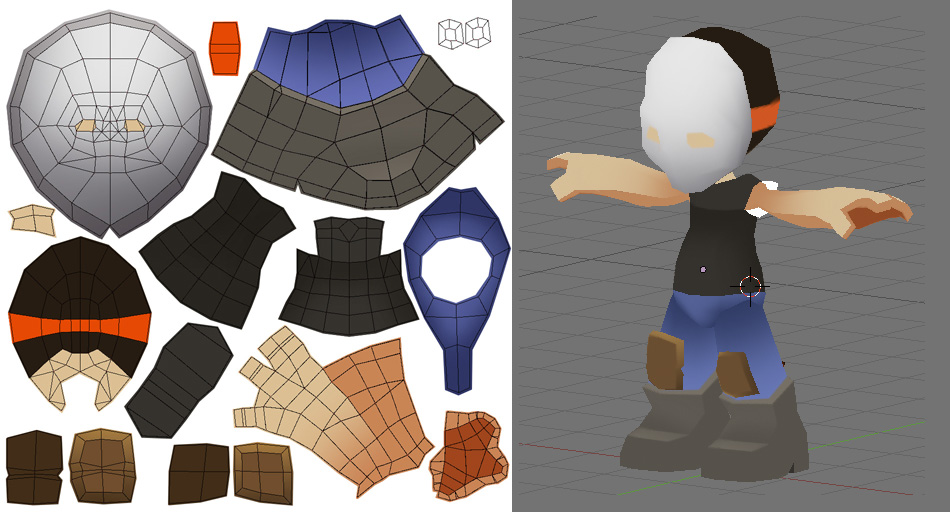
Step 3. More shadows and highlights
I continue on with the process of adding more shadows and highlights. These characters are blocky by design, so I don't mind using harsh shadow lines in some places.
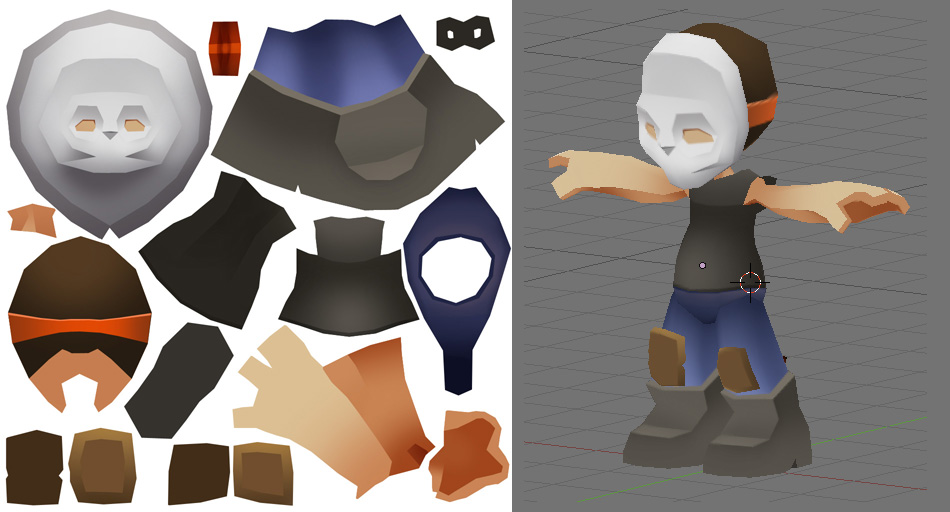
Step 4. Details
Here I start trying to lay down a lot of the detail work in order to further develop the character. At this point, I also start thinking about contrast, and I try to push the shadows even further. The character was screencapped before this stage of texture was done, that's why he doesn't have eyes.
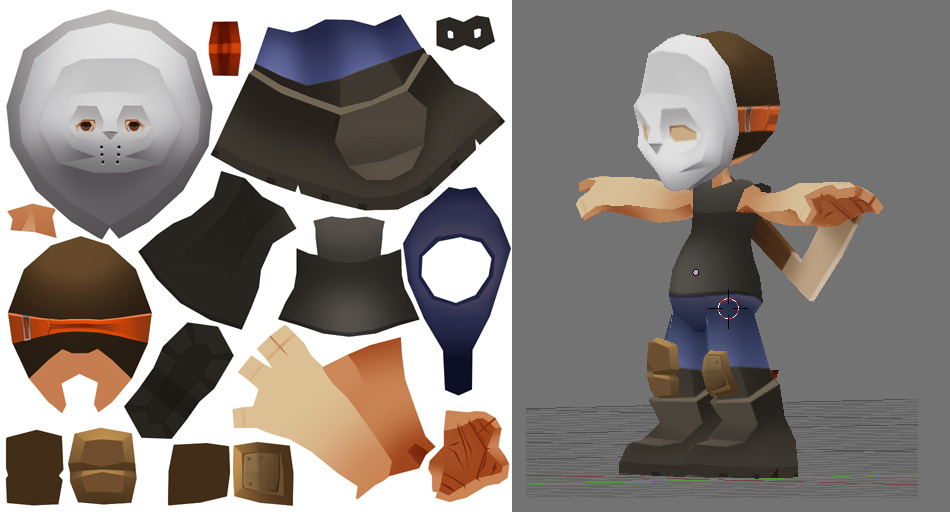
Step 5. More Details
At this point, I pulled out my tablet and started painting in some clothing shadows, the kind of stuff I can't easily do with a mouse. Even more details are added.
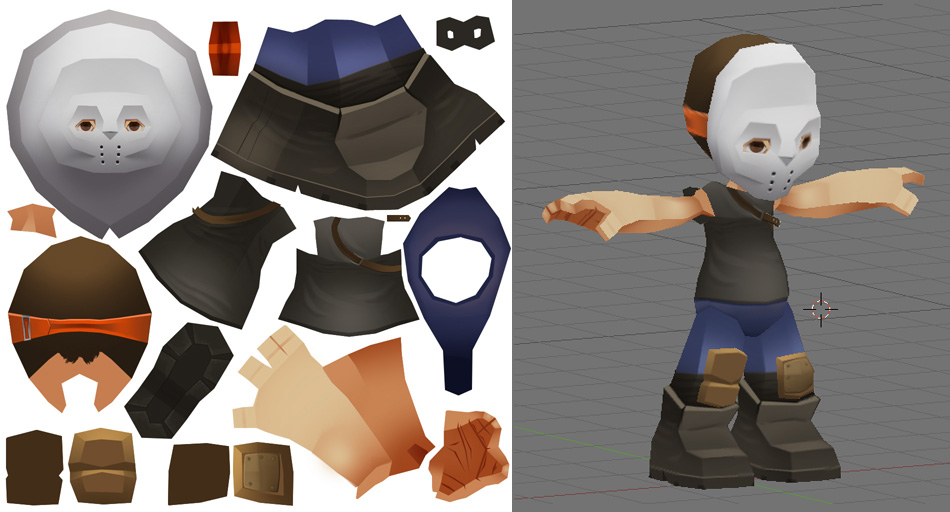
That's where he stands so far. I have some hair to figure out.
Step 1. Color blocking
Here's where I go through and put down solid colors. When you apply it to your character, it's going to look like CRAP. That's because there's no lighting or details.

Step 2. Basic shadows and highlights
Some games utilize lighting, others don't. I like to paint in my lighting directly on the character. And I usually paint as if the light source is from above. I take liberties with that rule, though. If something needs a bit of highlight, I try to go for it. It's amazing how much better the character looks with some subtle gradients hinting at a light source.

Step 3. More shadows and highlights
I continue on with the process of adding more shadows and highlights. These characters are blocky by design, so I don't mind using harsh shadow lines in some places.

Step 4. Details
Here I start trying to lay down a lot of the detail work in order to further develop the character. At this point, I also start thinking about contrast, and I try to push the shadows even further. The character was screencapped before this stage of texture was done, that's why he doesn't have eyes.

Step 5. More Details
At this point, I pulled out my tablet and started painting in some clothing shadows, the kind of stuff I can't easily do with a mouse. Even more details are added.

That's where he stands so far. I have some hair to figure out.
Friday, March 18, 2011
Tutorial: Modeling
This tutorial aims at creating a character of 1800 polys.
Things to remember:
Add Loop tool = ctrl + R
Select Loop = option + cmd(RMB)
Scale selection along normals = option + S
The video is quite long so I've included time markers so you know what begins when.
00:00 - Intro
04:40 - Begin Modeling
07:56 - Leg Modeling
12:37 - Knee Modeling
14:56 - Foot Modeling
22:08 - Chest/Stomach Refining
23:06 - Arms Modeling
29:25 - Hands Modeling
37:37 - Head Modeling
49:10 - Added Details
Things to remember:
Add Loop tool = ctrl + R
Select Loop = option + cmd(RMB)
Scale selection along normals = option + S
The video is quite long so I've included time markers so you know what begins when.
00:00 - Intro
04:40 - Begin Modeling
07:56 - Leg Modeling
12:37 - Knee Modeling
14:56 - Foot Modeling
22:08 - Chest/Stomach Refining
23:06 - Arms Modeling
29:25 - Hands Modeling
37:37 - Head Modeling
49:10 - Added Details
Wednesday, March 16, 2011
Low Poly Tip #2
Here's another way of reducing polys. I'd only do this if you're never going to get a close up on the hand. Still, helpful to know, though. Model your fingers as planes, and curving them in such a way that they never appear fully flat.
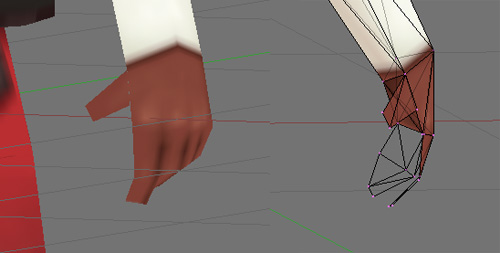

Low Poly Tip #1
Going through Tom Tallian's pack of low-poly Team Fortress models, I noticed a trick he was using in order to keep his meshes low on polygons. Not everything must share the same and extend from the same points. Instead, the limbs are sometimes modeled separetely and just made to look like they are "attached". Reminds me of how action figures are assembled.
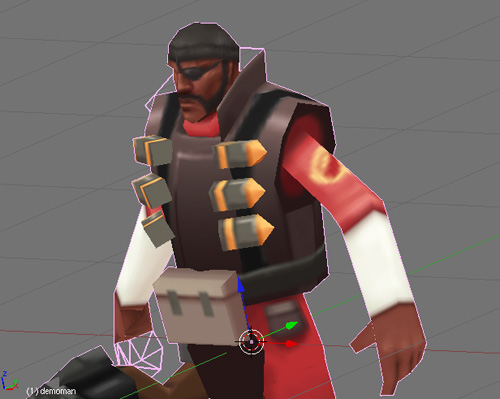
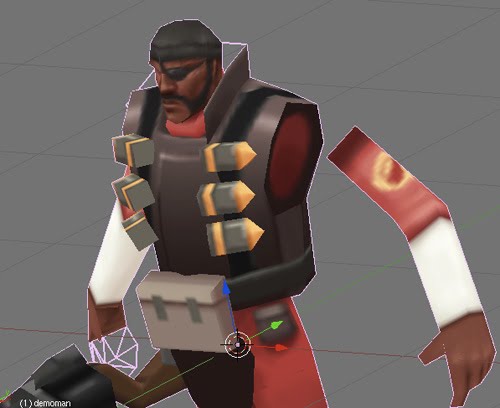
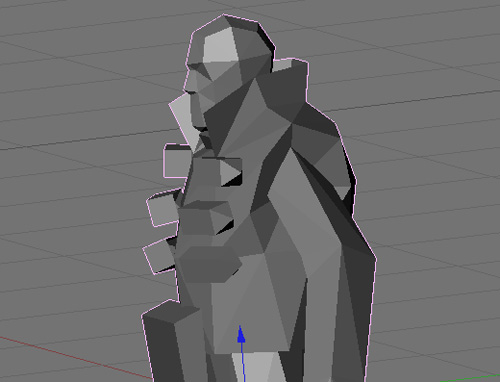



Wednesday, March 9, 2011
Reference: Yuna, FFX-2
I came across this nice little treat today. Someone extracted (I believe) the Yuna model from Final Fantasy X-2 and put it available for download. The file is a .ms3d, which is native to Milkshape3d. Unfortunately, I cannot open it because Milkshake3D is PC only. So if anyone wants to download it, Milkshape3d is free, and it might be nice to be able to check out some of that low poly hair. And if you do, any chance of exporting it to a .obj so I can check it out? (wink wink)
Survivor Yuna FF X-2
Milkshape3D
Here's some images, including texture maps! (256x256)!!!
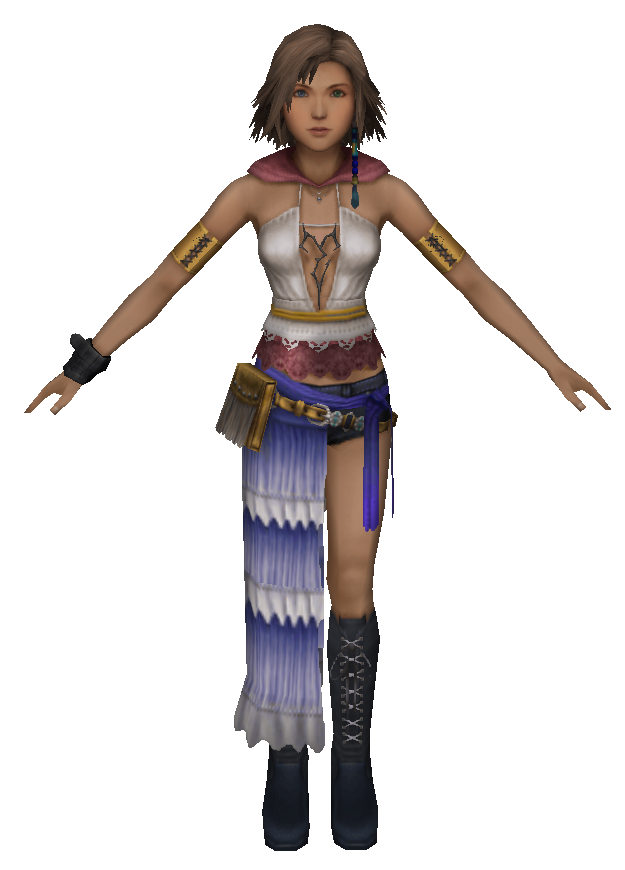
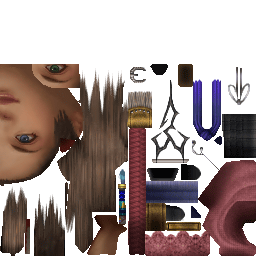
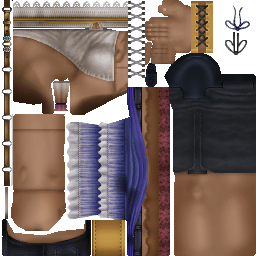
Survivor Yuna FF X-2
Milkshape3D
Here's some images, including texture maps! (256x256)!!!



Friday, March 4, 2011
Sword&Shield
This is one of the smoothest games created in Blender that I've seen so far. Though just a series of demos, this demonstrates how games in Blender can be both visually appealing and not very processor intensive.
Thursday, March 3, 2011
Old School Updates
Great examples of old style games brought to 3d. I'd love see some more of these. The first is made in Blender, the second I believe in 3DS Max.
Labels:
blender 2.49,
low poly,
old school updates,
video games
Wednesday, March 2, 2011
Reference: Modeling/Texturing
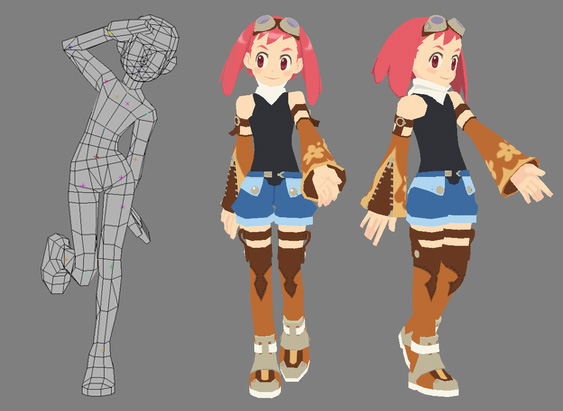
Always nice to see how the pros work. Also a good idea is how they have a character map to compare individual heights..
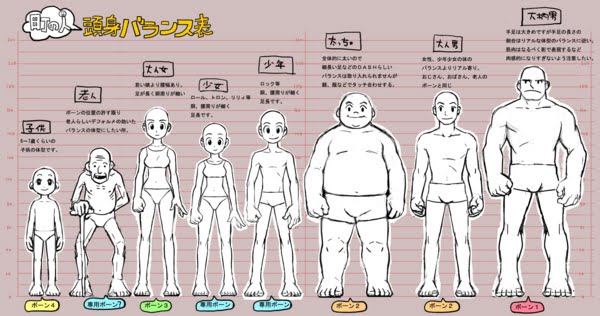
3D Modeling (Modeling)
3D Modeling Part 2 (Modeling/Texturing)
3D Modeling Part 3 (Texturing Process)
Wednesday, February 23, 2011
Reference: Actions
Ah yes, one of those "holy ****" moments where everything comes to light. Actions have been driving me crazy. It started to seem necessary to have keyframes at the head of every animation/action. But why!? Ah duh! You don't need some of those beginning keyframes if you wanted to blend two actions!!!
Labels:
action editor,
animating,
blender 2.49,
reference
Reference: Blender's Action Editor
Some handy info on Blender's Action Editor for animation.
Labels:
action editor,
animating,
blender 2.49,
reference
Tuesday, February 22, 2011
Tutorial: Weight Painting
Some useful info on how to weight paint your character rig when blender's auto weight-assign needs some fixing.
Blender Tip #1, Axis Constraint
Most tools can be constrained to an axis by pressing either the X, Y, or Z key after you've activated a tool. This works for tools like G (grab/move), S (scale), and R (rotate), and there's probably more. One of my favorite uses for this is to be able to flip anything (ie: a group of polygons selected in the UV) exactly. To do so, select your object, press S (scale), X (to constrain to the X axis), then type -1 (to flip).
Saturday, February 19, 2011
Reference: Cherry Darling
This is a great example of a how a low poly model with great textures can used to capture the likeness of a film character. Check the source for more.


Friday, February 18, 2011
Manga Blur - Low Poly Model
Very low poly! 100 polys on this character, rigged and animated. This video also includes wireframe mode!
Wednesday, February 16, 2011
Reference: Lara Croft Wireframe
Workshop
I wanted to detail my progress on modeling my most recent character. I recently found a handful of tutorials on Youtube demonstrating how easy it is to lowpoly model characters in Blender. (Those tutorials can be found here on our Low Poly blog. So I whipped up these front and side drawings (based on an old drawing in a sketchbook) of a toddler sized ninja turtle. And proceeded to model it.
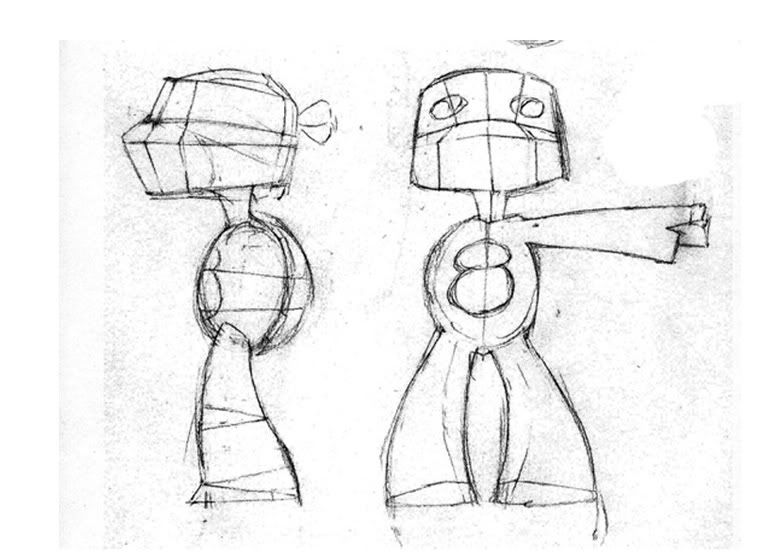
Modeling:
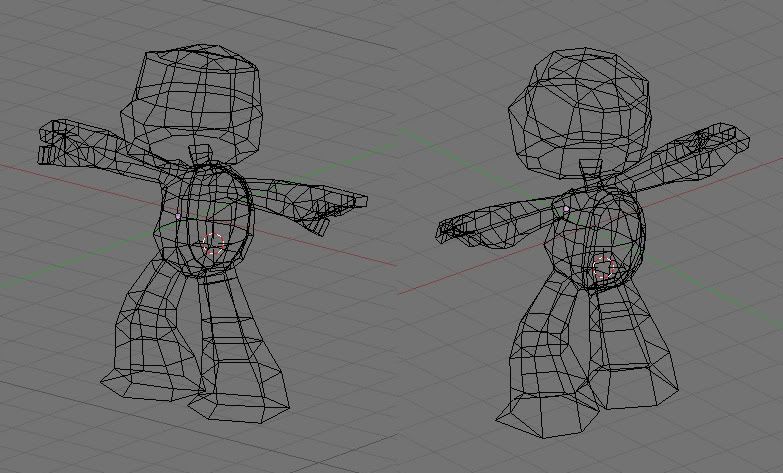
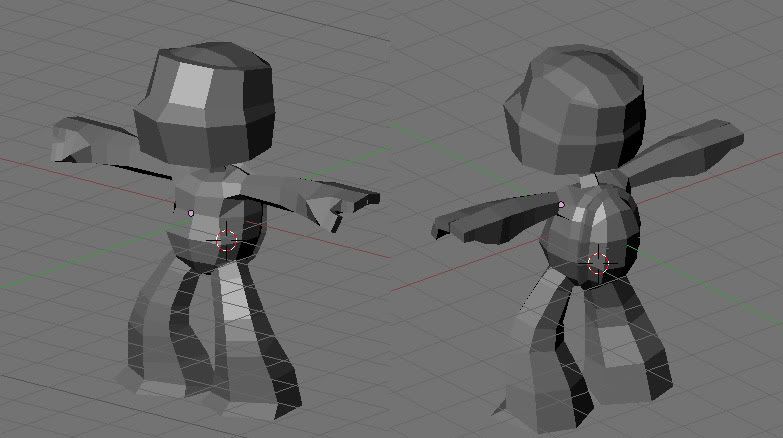
Texturing:

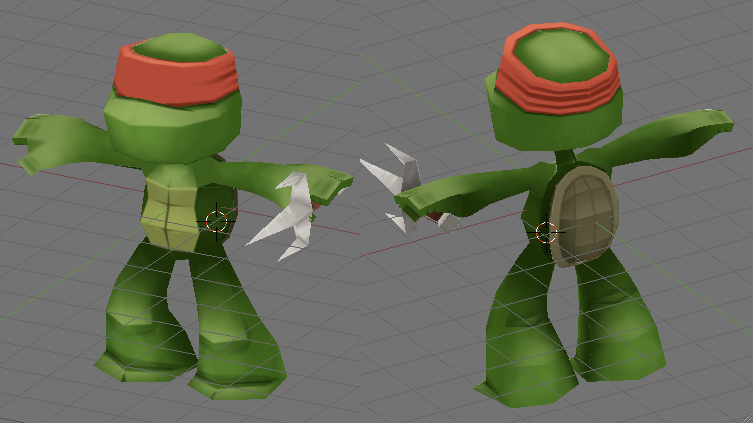
Texturing Details:

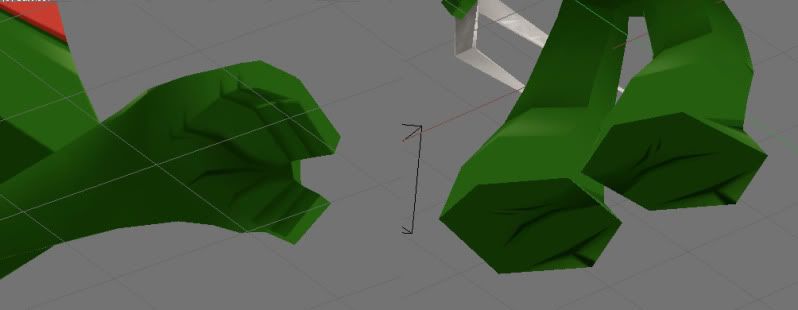
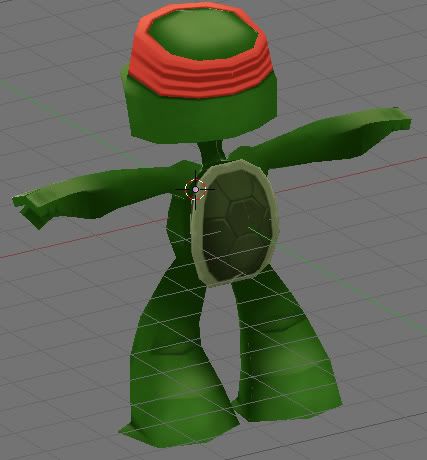
Rigging:
The rigging for this character was aided by these tutorials.
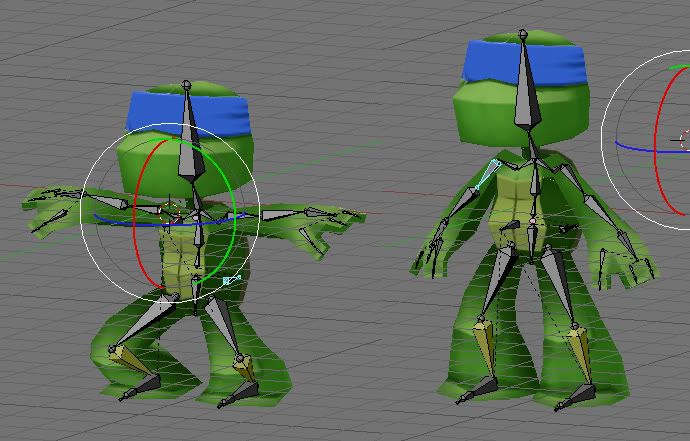
Animation:
And finally, the animation. It took a little over a week to get to this point.

Modeling:


Texturing:


Texturing Details:



Rigging:
The rigging for this character was aided by these tutorials.

Animation:
And finally, the animation. It took a little over a week to get to this point.
Reference: Textures - Shining Force EXA
A good look at how developers of Shining Force EXA have achieved a look that reflects the illustrative style of their character designs.
Tommy Tallian
Check out the work of Tommy Tallian, a fine example of low poly characters created for video games. Also a good way to see how his UV textures have been organized.

Tommy Tallian

Tommy Tallian
Tutorial - Rigging (by bugzilla)
Followup Videos:
Tutorial - Peter's Massive Blender Tutorials (Texturing)
The following is the next chapter in Peter's Blender tutorials and focuses on character rigging, however I don't recommend following it since I had a few problems with it. I'm posting it for reference. I have a better character rigging tutorial coming up in the next post.
Tutorial - Peter's Massive Blender Tutorials (Modeling)
These should get you started.
Getting Started
Welcome to the Low Poly Project blog! This is the sister blog of my Facebook group, meant to organize all tutorials and references that we've accumulated so far. The Facebook group is private but everything on this blog is open. Hope you learn something!
Subscribe to:
Comments (Atom)







